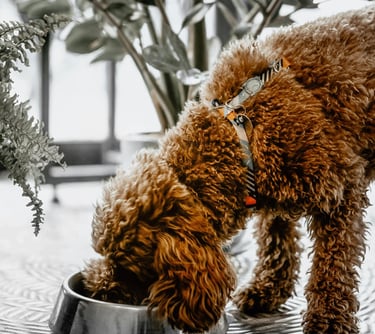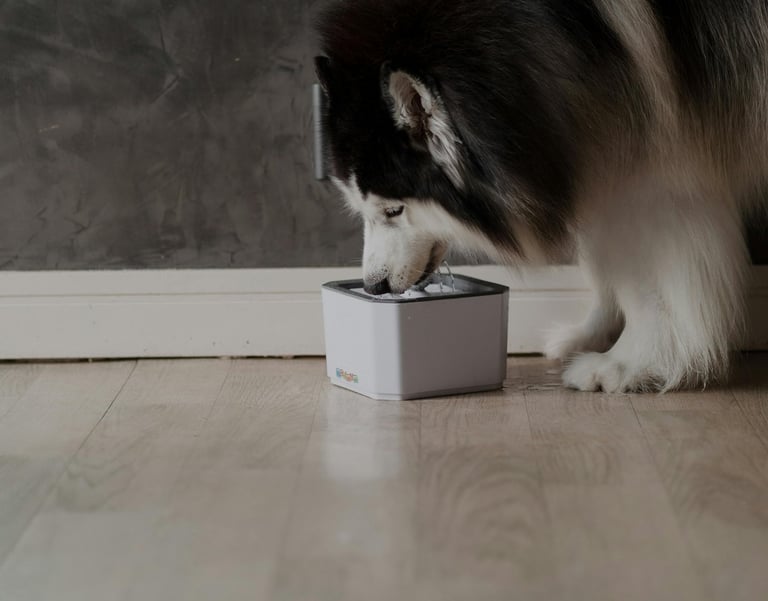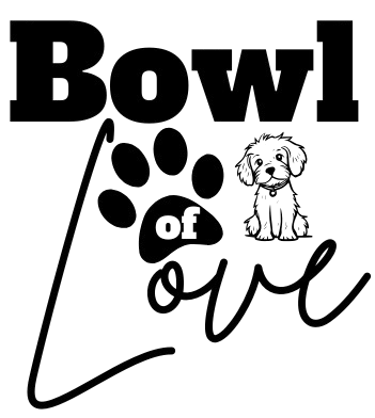Why Artificial Colors Shouldn't Be in Your Dog's Bowl
The Hidden Health Risks Pet Owners Need to Know
DOG NUTRITION TIPS
9/28/20254 min read
At Bowl of Love, we sometimes recommend trusted products. If you choose to purchase through our links, we may earn a small commission at no additional cost to you. Thank you for supporting our mission to bring healthier food choices to dogs everywhere.
Why Artificial Colors Shouldn't Be in Your Dog's Bowl: The Hidden Health Risks Pet Owners Need to Know
Dog owners often assume colorful kibble means better nutrition, but artificial colors serve no nutritional purpose for pets. These synthetic dyes are added purely for human appeal since dogs see colors differently than people do.
Artificial food coloring can cause allergic reactions, hyperactivity, and digestive issues in some dogs, yet provides zero health benefits. Many popular dog food brands continue using these additives despite growing concerns from veterinarians and pet nutrition experts.
Understanding which ingredients to avoid and how to select healthier alternatives can protect dogs from unnecessary chemical exposure. Natural, color-free diets often provide superior nutrition while eliminating potential risks associated with synthetic dyes.
The Risks and Impacts of Artificial Colors in Dog Food
Artificial colors in dog food can trigger allergic reactions, behavioral changes, and potential long-term health issues. Red 40, Yellow 5, and Blue 2 are among the most common synthetic dyes that appear in commercial pet foods despite providing no nutritional value.
Potential Health Consequences
Synthetic food dyes can cause gastrointestinal upset in sensitive dogs. Symptoms include vomiting, diarrhea, and stomach irritation that may develop within hours of consumption.
Some artificial colors contain chemical compounds that stress the liver and kidneys. These organs must work harder to process and eliminate synthetic substances from the body.
Long-term exposure concerns include:
Cellular damage from chemical accumulation
Weakened immune system function
Potential carcinogenic effects from certain dyes
Research on laboratory animals shows that high doses of some artificial colors may increase cancer risk. While pet food contains lower concentrations, regular consumption over years raises questions about cumulative effects.
For a one-ingredient, yummy treat for your best friend, we recommend A Better Treat's delicious salmon treat.
Common Artificial Dyes Used in Pet Food
Red 40 appears in red and orange-colored kibble and treats. This petroleum-derived dye is the most widely used artificial color in pet food manufacturing.
Yellow 5 and Yellow 6 create bright yellow and orange hues in dog food. These dyes are known allergens that can trigger skin reactions and digestive issues in susceptible animals.
Blue 2 produces blue and purple colors in pet treats and kibble. Combined with yellow dyes, it creates green-colored food products.
Dye Name Color Created Common Sources Red 40 Red, Orange Kibble, soft treats Yellow 5 Yellow, Orange Biscuits, training treats Blue 2 Blue, Purple, Green Specialty kibble, dental chews
Behavioral and Allergic Reactions
Hyperactivity and restlessness can occur in dogs after consuming artificial colors. Some pets show increased excitability, difficulty settling, or changes in sleep patterns.
Skin allergies manifest as itching, redness, or hot spots that develop on the face, paws, or belly. These reactions typically appear within 24-48 hours of exposure.
Respiratory symptoms include excessive panting, wheezing, or nasal discharge. Dogs with existing allergies or asthma may experience worsened symptoms when consuming synthetic dyes.
Food sensitivities can develop over time with repeated exposure. Dogs may initially tolerate artificial colors but later develop adverse reactions as their system becomes sensitized to specific chemical compounds.
Another yummy salmon treat is from Stewart's; one of our favorites!
Safer Alternatives and Choosing the Best Diet For Your Dog
Natural color additives offer safer options than synthetic dyes, while reading ingredient labels helps identify artificial colors. Selecting healthier dog food requires understanding label terminology and prioritizing nutritional value over visual appeal.
Natural Color Additives and Their Benefits
Natural color additives provide visual appeal without the health risks associated with synthetic dyes. These ingredients derive from fruits, vegetables, and other natural sources.
Common natural colorants include:
Beet juice (red/pink coloring)
Turmeric (yellow coloring)
Carrot extract (orange coloring)
Spinach powder (green coloring)
Blueberry extract (purple/blue coloring)
These natural options contain beneficial nutrients. Turmeric provides anti-inflammatory properties. Beet juice offers antioxidants and fiber.
Carrot extract supplies beta-carotene and vitamin A. Natural colorants break down more easily in a dog's digestive system compared to synthetic alternatives.
Many premium dog food brands use these natural ingredients. They maintain product consistency while avoiding artificial additives.
How to Identify Artificial Colors on Ingredient Labels
Artificial colors appear on ingredient labels using specific naming conventions. Pet food manufacturers must list all colorants in descending order by weight.
Look for these artificial color indicators:
FD&C colors (Red #40, Yellow #5, Blue #2)
Numbers following color names
Chemical names like Tartrazine or Allura Red
Terms containing "Lake" (Red #40 Lake)
Ingredient lists place items by weight percentage. Colors appearing early in the list indicate higher concentrations. Some manufacturers use multiple artificial colors in single products.
Avoid these common artificial colorants:
Red #40 (Allura Red AC)
Yellow #5 (Tartrazine)
Yellow #6 (Sunset Yellow)
Blue #1 (Brilliant Blue)
Blue #2 (Indigo Carmine)
Natural alternatives appear as actual ingredient names. Examples include "dried carrots" or "turmeric extract" rather than color codes.
JustFoodForDogs has healthy, one-ingredient delicious treats for your best friend!
Tips for Selecting Healthier Dog Food
Choose dog foods prioritizing nutritional content over visual presentation. High-quality products focus on ingredient quality rather than artificial enhancement.
Key selection criteria:
Named meat proteins as first ingredients
Limited ingredient lists
AAFCO nutritional adequacy statements
No artificial colors, flavors, or preservatives
Read ingredient panels thoroughly before purchasing. Avoid foods listing multiple artificial additives. Premium brands often exclude synthetic colorants entirely.
Consider your dog's specific dietary needs. Puppies require different nutrition than senior dogs. Dogs with allergies need specialized formulations.
Recommended food types:
Grain-free options for sensitive stomachs
Limited ingredient diets for food allergies
Raw or freeze-dried foods for minimal processing
Organic certified products for pesticide-free ingredients
Consult veterinarians for personalized recommendations. They can suggest appropriate brands based on your dog's age, size, and health status.






Connect
Reach out for support and inquiries.
Subscribe
contactbowloflove@gmail.com
© 2025. All rights reserved.
